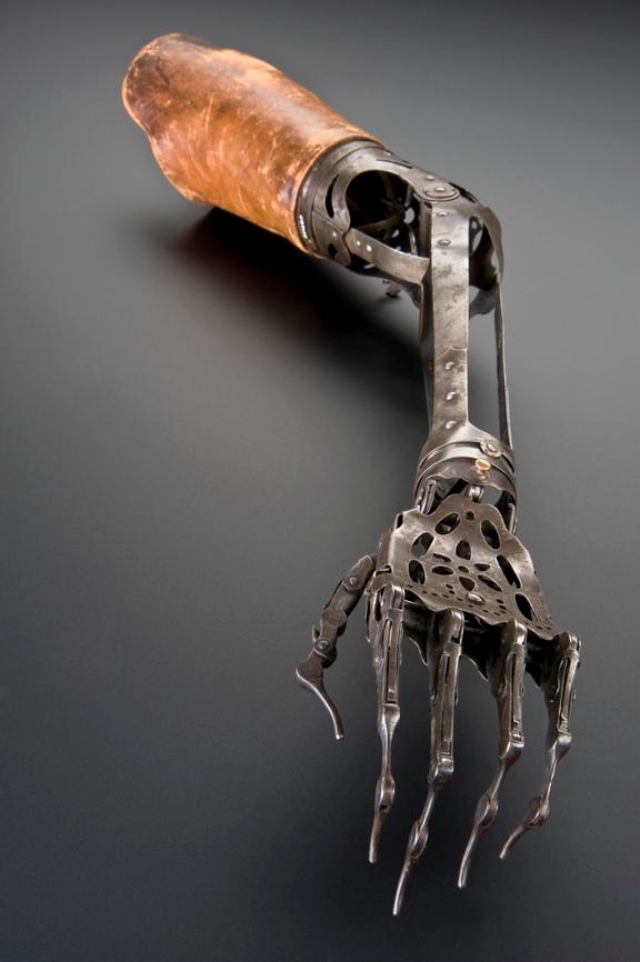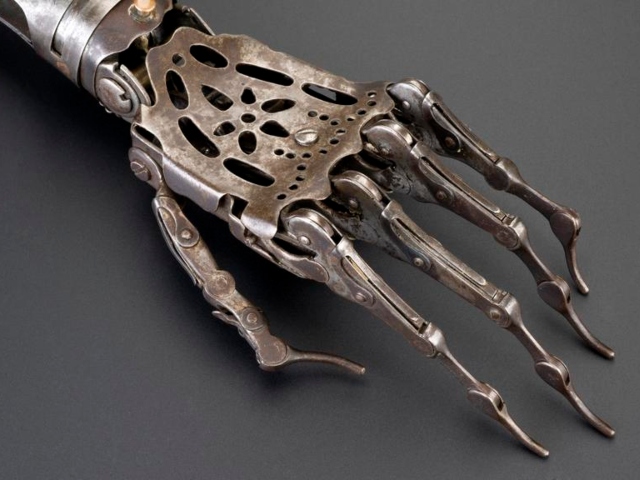
-
Archaeologists Unearth a Medieval Skeleton With ‘Iron Man’ Prosthetic Hand
30 Oct 2023 by Heinrich in History, Tech/Sci, World
[imagesource:uksciencemuseum.org]
An amazing archaeological find in Freising, Germany, includes a medieval skeleton with a complicated iron prosthetic hand. The 15th-century grave provides significant evidence of early prosthetic technology and medical ingenuity.
The Bavarian State Office for Monument Preservation revealed the discovery during excavation work at the Church of St George. Carbon dating indicates that the man, who was between the ages of 30 and 50, lived and died between 1450 and 1620.
This period in European history was extremely bloody and saw a spike in the creation of prosthetics as injured soldiers returned from the numerous conflicts going on in the age.
Military operations, especially engagements during the disastrous Thirty Years’ War, marked much of this period’s history and these tumultuous times would have resulted in horrific injuries and amputations, increasing the demand for prostheses.
According to Dr. Walter Irlinger of the Bavarian State Office for Monument Preservation, the prosthetic device is remarkable.
“The hollow hand prosthesis on the left hand added four fingers. The index, middle, ring and little fingers are individually formed from sheet metal and are immovable. The finger replicas lie parallel to each other, slightly curved.” Irlinger explained.
Secured with straps, this prosthetic device is an example of ‘cutting-edge engineering’ for the time.
Researchers discovered gauze-like cloth inside the iron prosthetic, which was most likely employed as padding for the amputee’s hand stump. Notably, a thumb bone was attached to the prosthetic’s inside side, showing that the patient had kept his thumb after amputation.
While this find is amazing, it is not unique in history. In Central Europe, there are roughly 50 known prosthetic devices from the late Middle Ages and early modern period. They range from simple, non-moving models to complex machines incorporating mechanical components.
[image:uksciencemuseum]
Götz von Berlichingen, the famous knight, is a significant character from this era. After losing his right hand during the siege of Landshut in 1530, he wore an “Iron Hand” prosthetic. In contrast to the Freising finding, von Berlichingen’s prosthetic was an engineering marvel for its day, with moveable parts and a sophisticated design.
In 2018, an incredible prosthetic discovery was made in Verona’s Longobard area. Archaeologists discovered a Medieval warrior with a healed severed forearm. They discovered a buckle and a knife nearby, implying that the warrior may have used the knife as a prosthetic replacement for his hand.
[image:publicdomain]
This discovery in Freising sheds light on the use and evolution of prosthetics during the 15th century. The intricate craftsmanship of the iron hand from Freising, as well as other prosthetics such as the one worn by Götz von Berlichingen, illustrates the period’s medical advances and flexibility.
It’s not quite up there with today’s neural interface prosthetics, but at a time when wars were still fought with swords and trebuchets, it’s as impressive as Iron Man‘s suit.
[source:ancientorigins]
Latest News
-
Thai Woman Sentenced To Death For Murdering 14 Friends With Cyanide In Shocking Killing Spree
[imagesource: Sararat Rangsiwuthaporn] A woman in Thailand, dubbed 'Am Cyanide' by Thai...
-
René Magritte Painting Sells For Record R2.1 Billion At Auction
[imagesource:renemagritte.org] A René Magritte painting portraying an eerily lighted s...
-
Brave Rape Survivor Alison Botha Faces New Challenge After Brain Surgery
[imagesource: Alison Botha] Gqeberha rape survivor Alison Botha, a beacon of resilience...
-
Get Ready For The Mother of All Celebrations As MCQP Turns 30
[imagesource:mcqp/facebook] Clutch your pearls for South Africa’s favourite LGBTQIA+ ce...
-
The Iconic Good Hope Centre Is Set For Redevelopment
[imagesource:capetown.gov] The City of Cape Town’s Mayoral Committee has approved the...
-






























